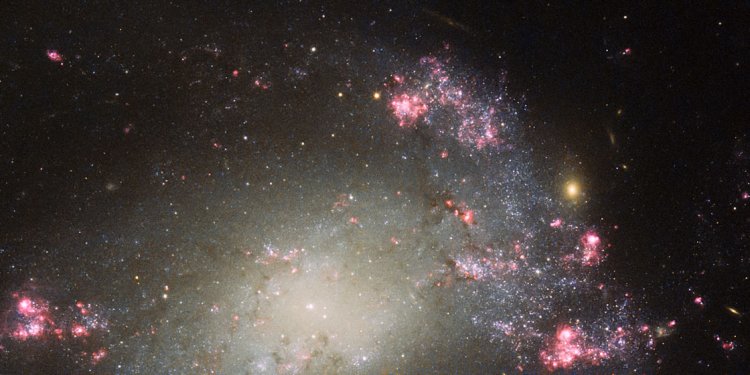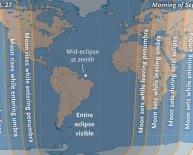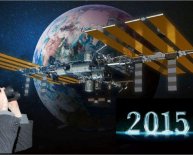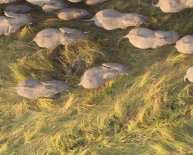
Galaxy of space
 Galaxies — those vast collections of stars that populate our universe — are all over the place. Perhaps the most resonant example of this fact is the Hubble eXtreme Deep Field, a collection of photographs from the Hubble Space Telescope revealing thousands of galaxies in a single composite picture.
Galaxies — those vast collections of stars that populate our universe — are all over the place. Perhaps the most resonant example of this fact is the Hubble eXtreme Deep Field, a collection of photographs from the Hubble Space Telescope revealing thousands of galaxies in a single composite picture.
Estimating how many galaxies are throughout the universe is a tougher job, however. Sheer numbers is one problem — once the count gets into the billions, it takes a while to do the addition. Another problem is the limitation of our instruments. To get the best view, a telescope needs to have a large aperture (the diameter of the main mirror or lens) and be located above the atmosphere to avoid distortion from Earth's air.
While estimates among different experts vary, an acceptable range is between 100 billion and 200 billion galaxies, Mario Livio, an astrophysicist at the Space Telescope Science Institute in Baltimore, told Space.com.
Going deep
To the best of Livio's knowledge, Hubble is the best instrument available for galaxy counting and estimation. The telescope, launched in 1990, initially had a distortion on its main mirror that was corrected during a shuttle visit in 1993. Hubble also went underwent several upgrades and service visits until the final shuttle mission there in May 2009.
In 1995, astronomers pointed the telescope at what appeared to be an empty region of Ursa Major, and collected 10 days' worth of observations. The result was an estimated 3, 000 faint galaxies in a single frame, going as dim as 30th magnitude. (For comparison, the North Star or Polaris is at about 2nd magnitude.) This image composite was called the Hubble Deep Field and was the furthest anyone had seen into the universe at the time. [Related: Brightest Stars: Luminosity & Magnitude]
As the Hubble telescope received upgrades to its instruments, astronomers repeated the experiment twice. In 2003 and 2004, scientists created the Hubble Ultra Deep Field, which in a million-second exposure revealed about 10, 000 galaxies in a small spot in the constellation Fornax.
In 2012, again using upgraded instruments, scientists used the telescope to look at a portion of the Ultra Deep Field. Even in this narrower field of view, astronomers were able to detect about 5, 500 galaxies. Researchers dubbed this the eXtreme Deep Field.
All in all, Hubble reveals an estimated 100 billion galaxies in the universe or so, but this number is likely to increase to about 200 billion as telescope technology in space improves, Livio said.
Counting stars
Whatever instrument is used, the method of estimating the number of galaxies is the same. You take the portion of sky imaged by the telescope (in this case, Hubble). Then — using the ratio of the sliver of sky to the entire universe — you can determine the number of galaxies in the universe.
"This is assuming that there is no large cosmic variance, that the universe is homogenous, " Livio said. "We have good reasons to suspect that is the case. That is the cosmological principle."
The principle dates back to Albert Einstein's theory of general relativity at the turn of the last century. One of general relativity's findings is that gravity is a distortion of space and time. With that understanding in hand, several scientists (including Einstein) tried to understand how gravity affected the entire universe.
"The simplest assumption to make is that if you viewed the contents of the universe with sufficiently poor vision, it would appear roughly the same everywhere and in every direction, " NASA stated. "That is, the matter in the universe is homogeneous and isotropic when averaged over very large scales. This is called the cosmological principle."
One example of the cosmological principle at work is the cosmic microwave background, radiation that is a remnant of the early stages of the universe after the Big Bang. Using instruments such as NASA's Wilkinson Microwave Anisotropy Probe, astronomers have found the CMB is virtually identical wherever one looks.
Would the number of galaxies change with time?
Measurements of the universe's expansion — through watching galaxies race away from us — show that it is about 13.82 billion years old. As the universe gets older and bigger, however, galaxies will recede farther and farther from Earth. This will make them more difficult to see in telescopes.
The universe is expanding faster than the speed of light (which does not violate Einstein's speed limit because the expansion is of the universe itself, rather than of objects traveling through the universe). Also, the universe is accelerating in its expansion.
This is where the concept of the "observable universe" — the universe that we can see — comes into play. In 1 trillion to 2 trillion years, Livio said, this means that there will be galaxies that are beyond what we can see from Earth.
"We can only see light from galaxies whose light had enough time to reach us, " Livio said. "It doesn’t mean that that’s all there is in the universe. Hence, the definition of the observable universe."
Galaxies also change over time. The Milky Way is on a collision course with the nearby Andromeda Galaxy, and both will merge in about 4 billion years. Later on, other galaxies in our Local Group — the galaxies closest to us — will eventually combine. Residents of that future galaxy would have a much darker universe to observe, Livio said.
"Civilizations started then, they would have no evidence that there was a universe with 100 billion galaxies, " he said. "They would not see the expansion. They would probably not be able to tell there was a Big Bang."















